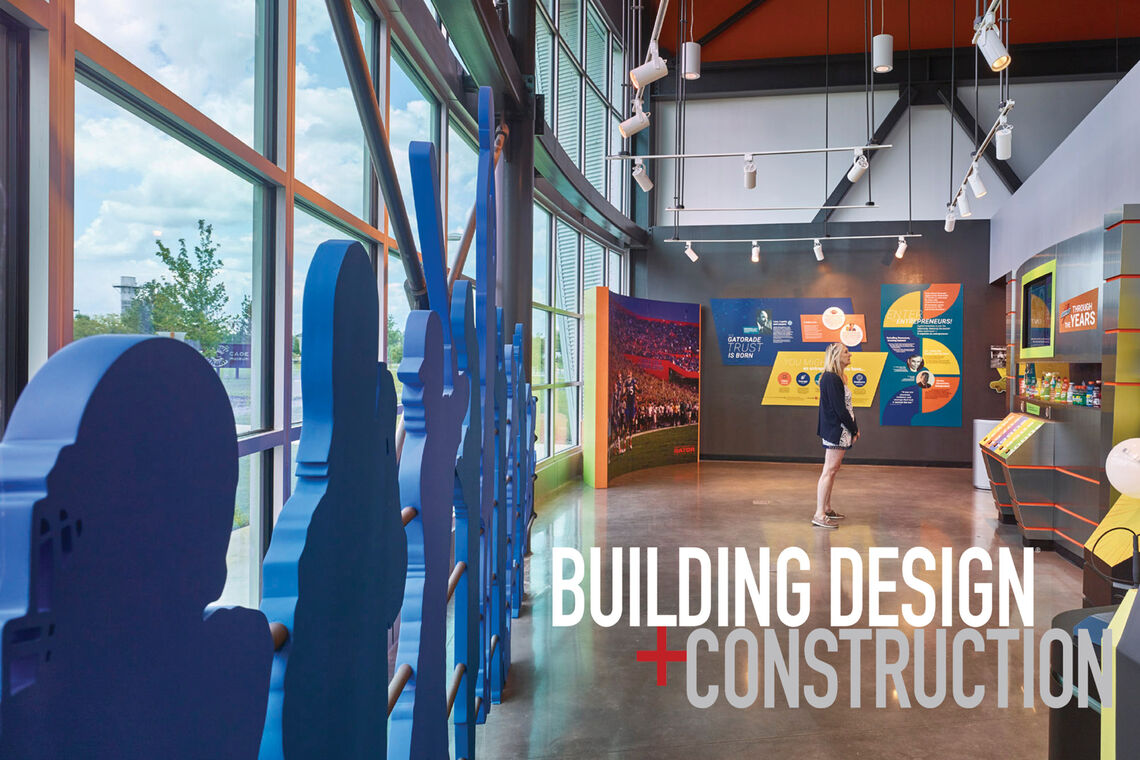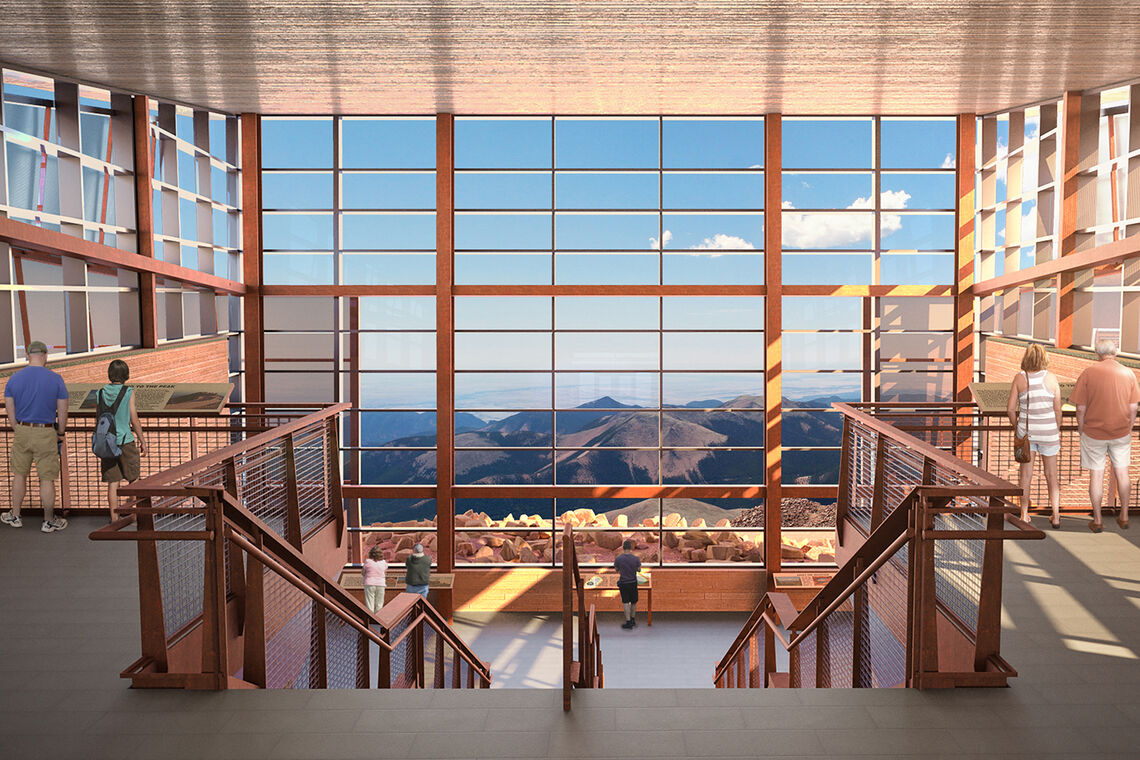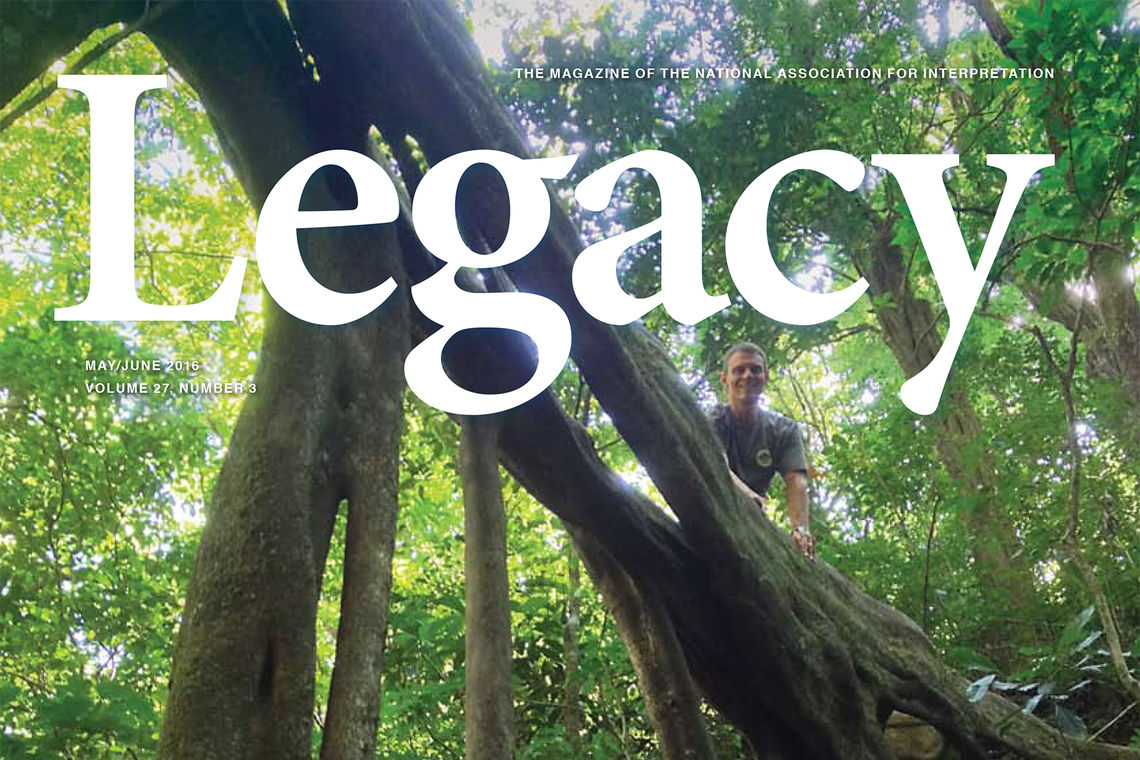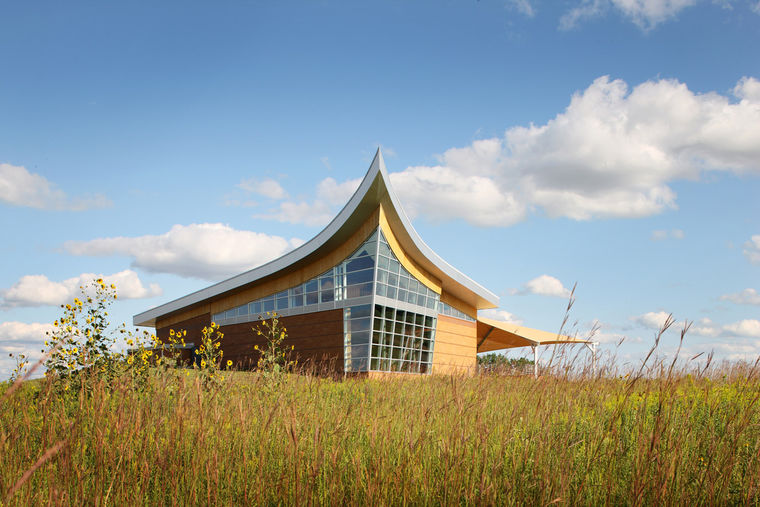


Pikes Peak Summit Visitor Center
Cascade, CO
- Details
- Exhibits, visitor orientation, dining, gift shop
- Rooftop terrace with 180 degree unobstructed views
- Designed to achieve both LEED Silver and Living Building Challenge Certifications
- Design Architect: GWWO Architects; Managing Firm: RTA Architects
- Owner
- Pikes Peak America's Mountain
- Services
- Site Analysis, Fundraising Materials, Community Involvement, Sustainable Design, Interior Design, Full Design Services, Building Information Modeling

Pikes Peak, the most visited of Colorado’s great mountains, has long claimed a powerful hold on the public imagination. More than one million people each year ascend to the summit, where they are rewarded with the view that inspired Katharine Lee Bates to write the lyrics of “America the Beautiful.” For visitors today, the perspective from 14,115 feet still evokes the awe and optimism of a seemingly limitless vista across the continent.
The “design concept is no less than brilliant.”
—Advocates for the Pikes Peak Summit House


Embedded into the mountainside, the low-rise structure is seemingly carved from the southeast side of the peak. Its form and materials, with stone inspired by Pikes Peak granite, evoke the crags and rock formations found above the tree line. Seen from below, the building appears as a building of the mountain rather than one on the mountain, yet as visitors arrive at the summit it emerges into view as a clear destination.
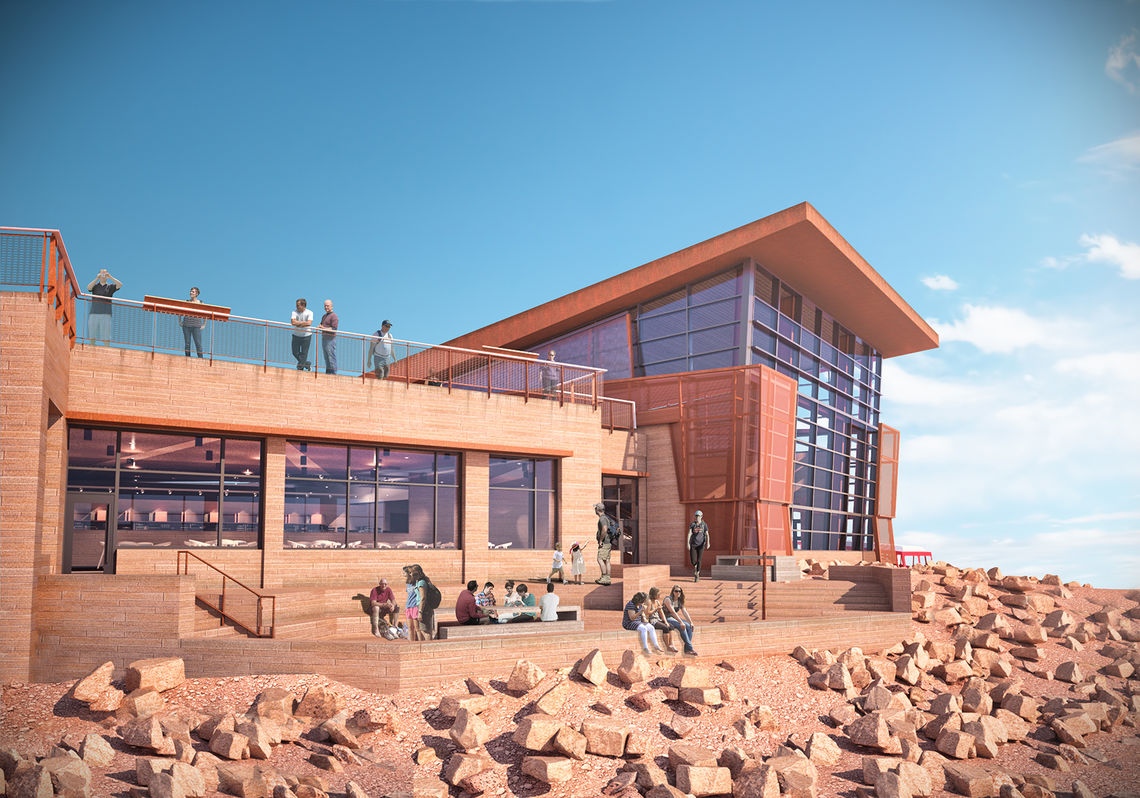


Entering the pavilion lobby from the peak, visitors are taken aback by the perfectly framed view of Mount Rosa, the summit that Zebulon Pike climbed on his 1806 expedition to survey the territory that had been recently acquired as part of the Louisiana Purchase. The architecture of the pavilion highlights the relationship between the two landforms; the viewing angle from the top of the lobby steps to Mt. Rosa slopes down 3.5-degrees, with the same angle echoed by the roof’s upward slope.

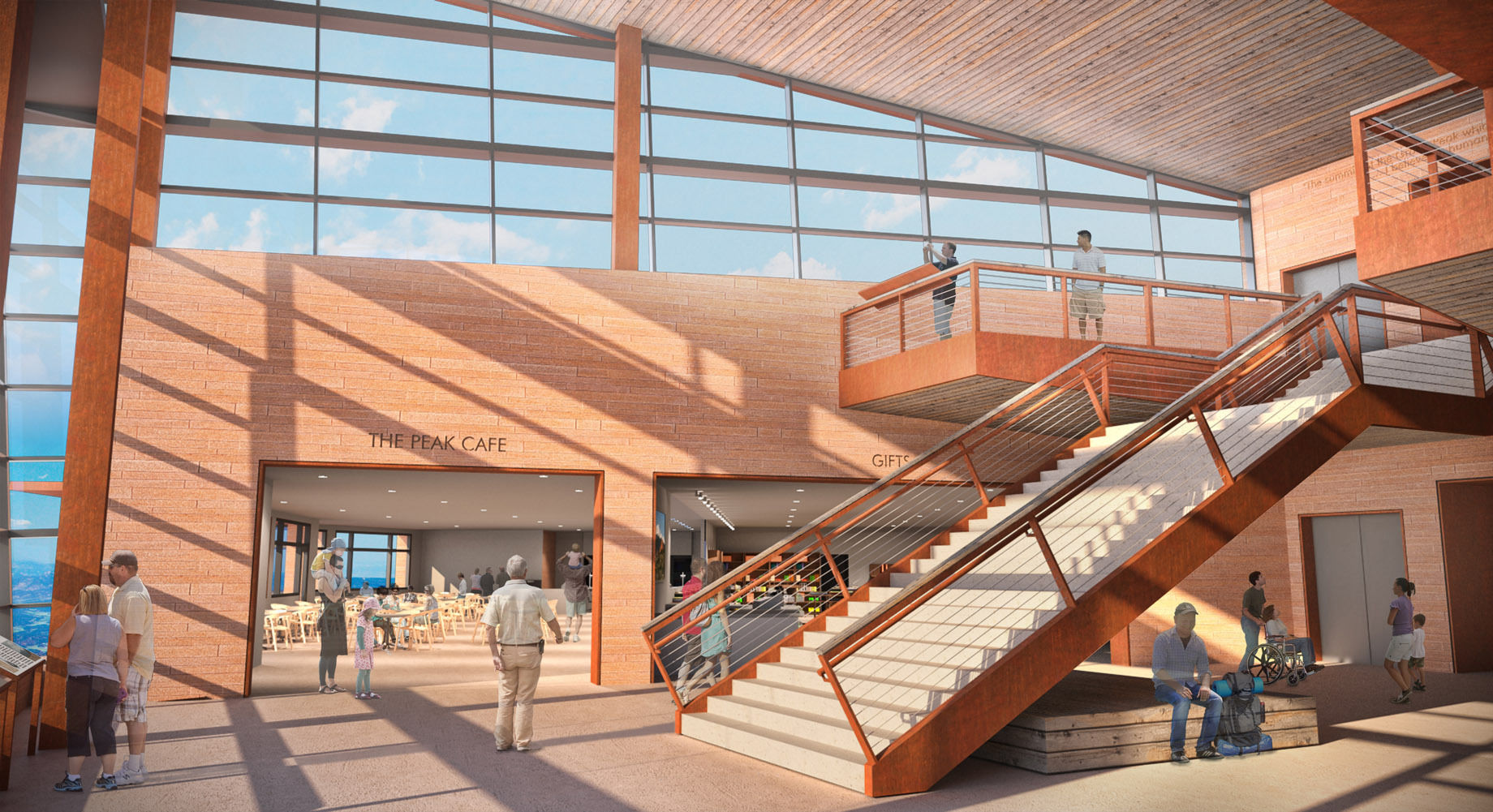

Pursing the Living Building Challenge—the world’s most rigorous and progressive environmentally green performance standard—the facility incorporates many sustainable strategies including a vacuum system for toilets and blackwater to greywater conversion saving more than 350,000 gallons per year; a highly insulated concrete shell with in-floor radiant heating; planned remote solar arrays to supply the building’s operational energy needs; building zones that vary in temperature based on the activity taking place; biophilic principles; and the use of building materials that are free of toxic red-list chemicals and materials.
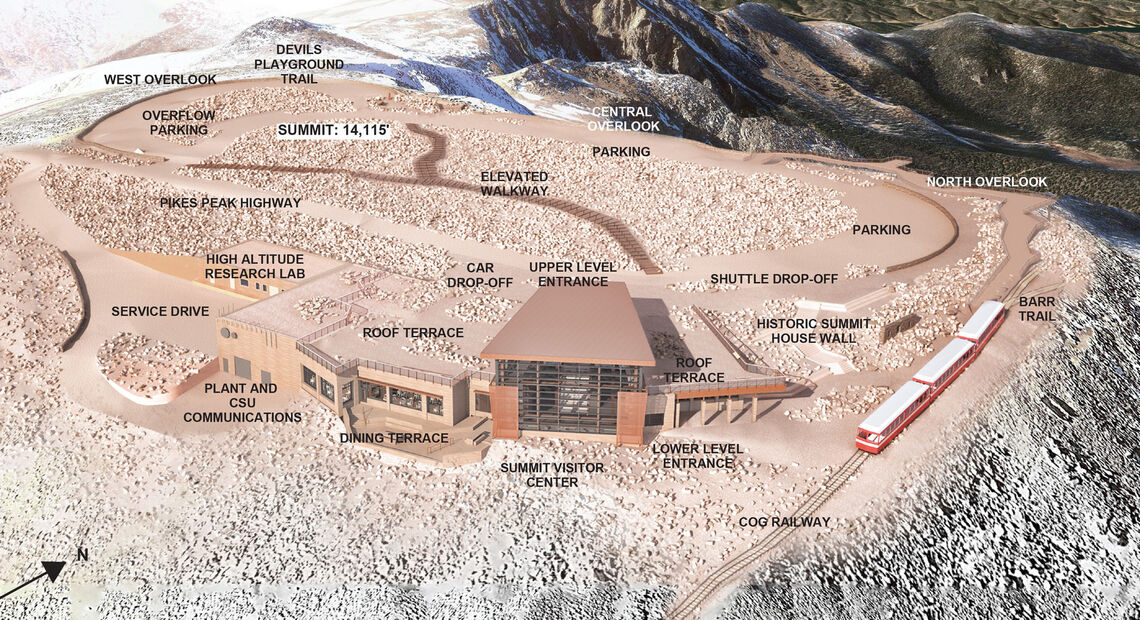


Related News & Insights
